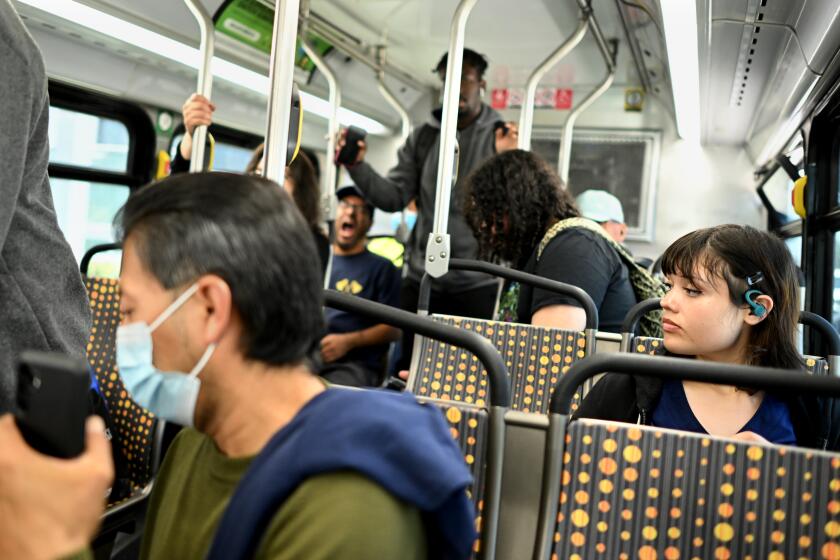The $1 ride that costs Metro $43. Why some want to keep it going
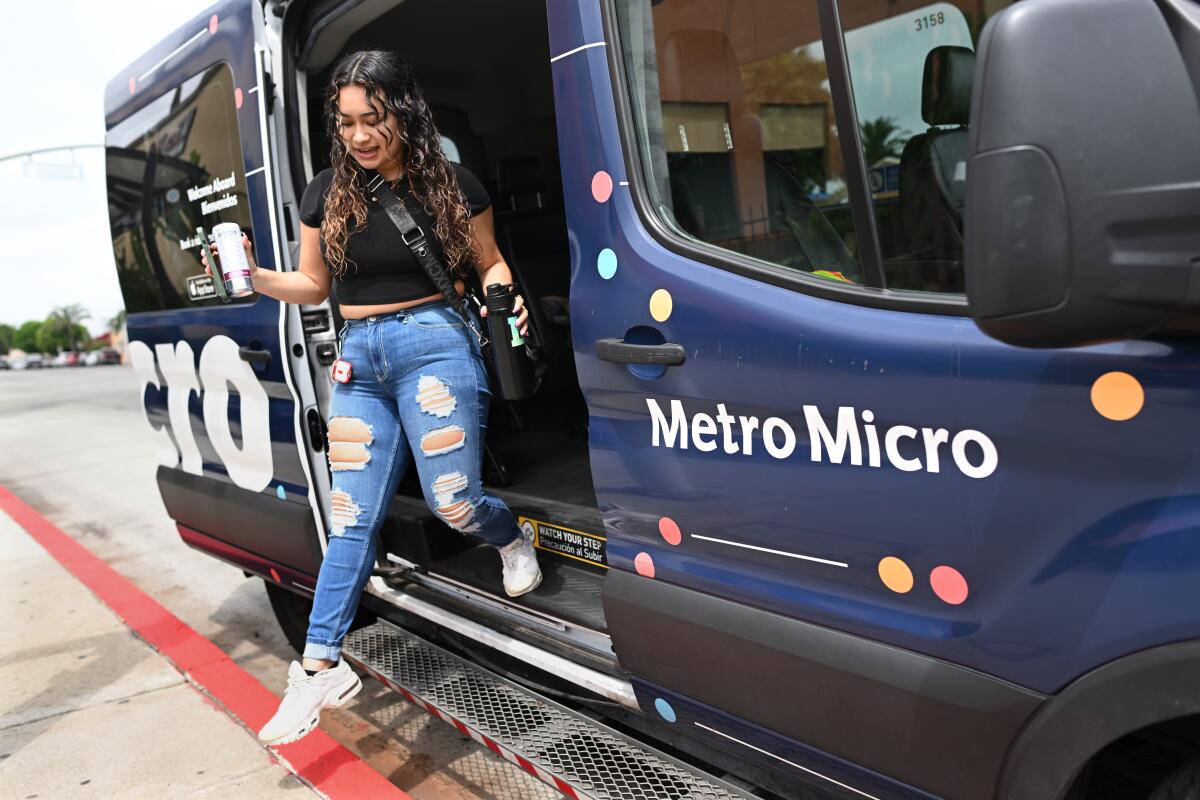
- Share via
Ana Castro thumbs through her phone as the Metro Micro van pulls up next to her retail job at the Lynwood shopping center Plaza Mexico. Nervous about driving after her car was totaled and wary of traveling alone on the bus, the cheap ride-share service has been a lifesaver for the Watts teenager.
It’s clean, air-conditioned, picks her up near her front door and takes a fraction of the time it would to travel by bus to school or work. It’s like a Lyft or Uber ride-share with one huge difference: it costs a buck.
“Ever since I found this, I thank God,” Castro said. “I always use it.”
The rub is that while riders pay only $1 for the on-demand service called Metro Micro, the Los Angeles Metropolitan Transportation Authority pays about $43 per ride.
Public transit has always been heavily subsidized, but the cost is more than four times what it costs to provide a ride on a bus. The expense has rankled some inside Metro, which runs the pilot van program, and raised larger questions about service quality, fairness and the future of public transit.
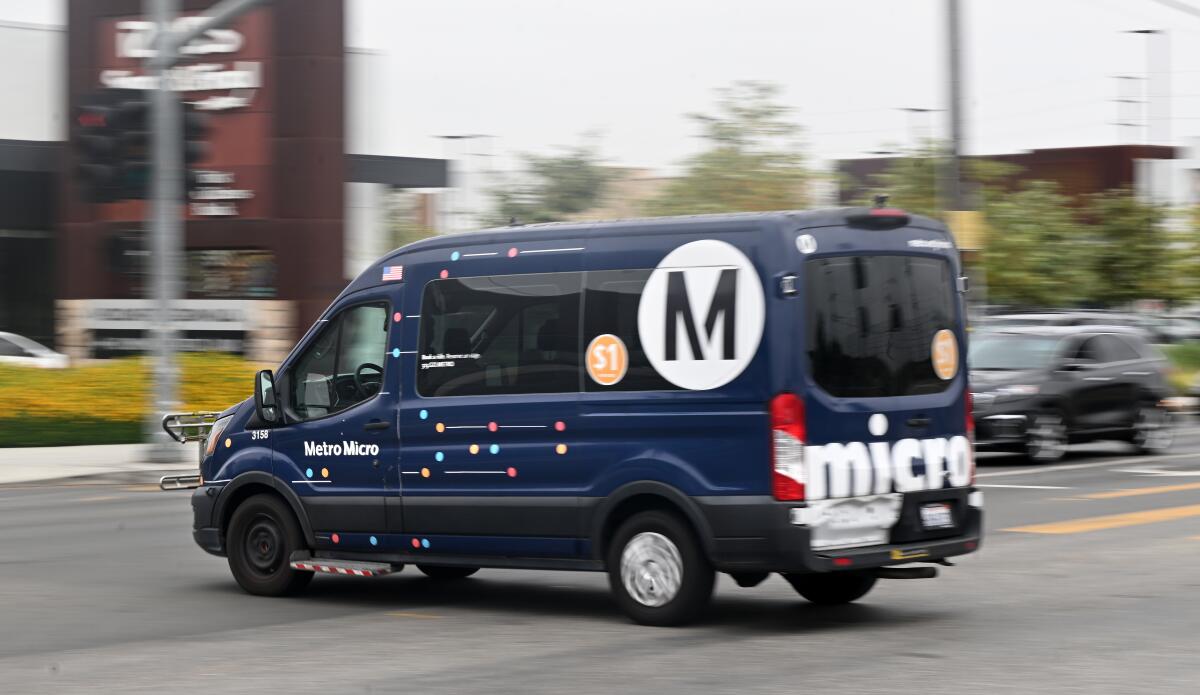
“It’s a money loser for Metro,” Los Angeles County Supervisor and Metro board member Janice Hahn said during a committee meeting last month.
The nearly 3-year-old, $31-million-a-year program is set to expire this month, but some are hoping to extend it or even make it permanent.
The program that started as an experiment in on-demand service has become an answer to gaps in Metro’s network.
Planners placed it in eight zones near 14 fully or partially eliminated bus routes. The vans can carry up to eight passengers and were intended to work for short trips in areas less than 30 square miles. But it has failed to attract large ridership even as a band of loyal users hail it a safe alternative to Metro’s train and bus system.
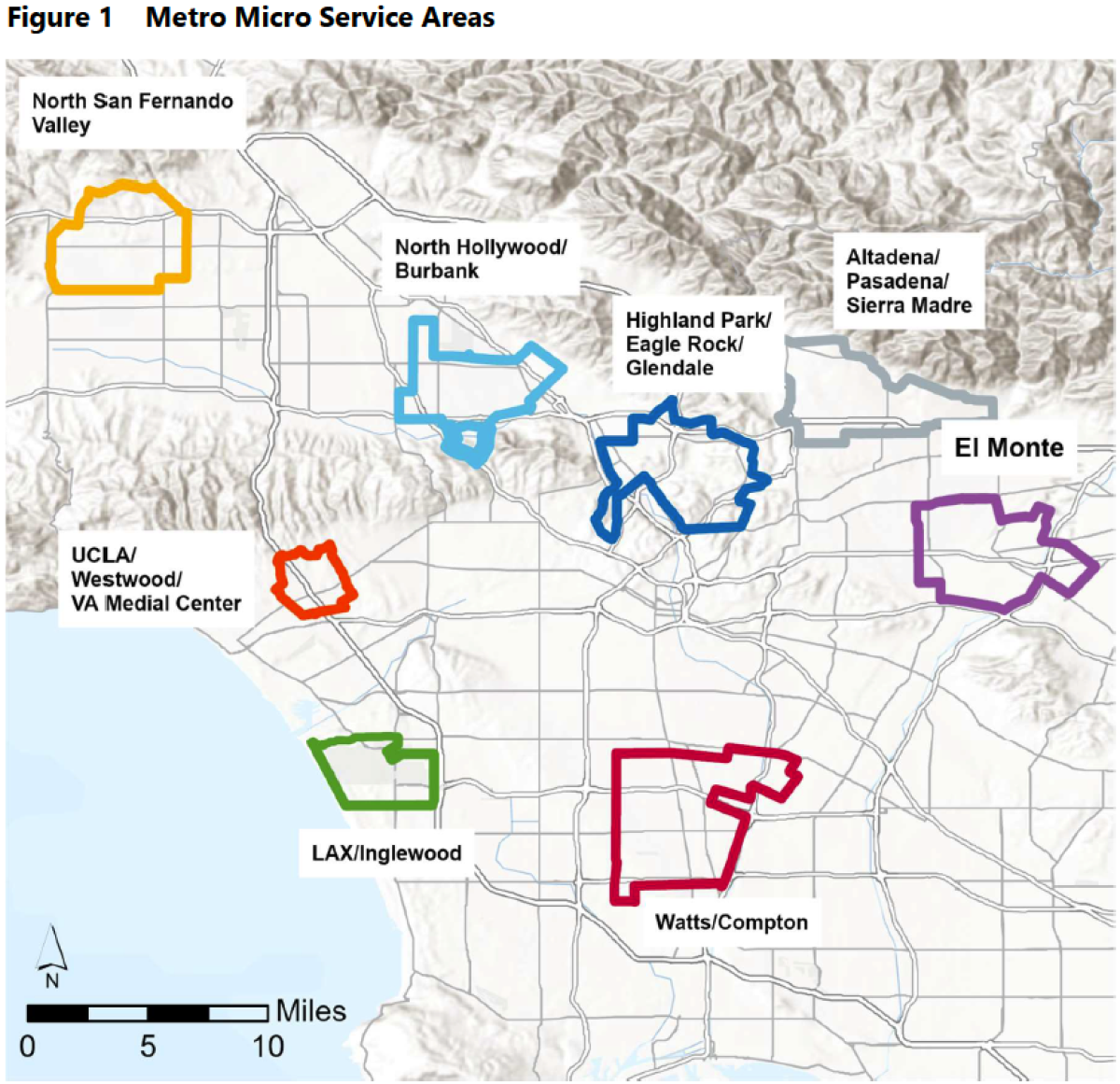
“I don’t really know what it gets us, except for we’re providing some rides, some dollar rides for people but it’s such a huge cost to do that,” Hahn said.
The biggest issue for Metro Micro is getting more passengers. Lower ridership drives up cost because it’s essentially becoming a personal ride instead of a shared one. Costs soared during its outset when weekday average rides were just 350 people and the cost to operate was $324 a ride.
“We’re learning our lessons in terms of what aspects we can bring down in costs,” said Conan Cheung, Metro’s director of operations. The agency is now looking at different business models, and trying to get rid of duplicative services in the program.
“It’s not going to be as efficient (as a bus),” Cheung said. “But it’s better service for people.”
The service has provided more than 1 million rides, and about 11% of the users surveyed are new to public transit, according to a Metro survey. The riders lean younger, and there’s a larger percentage of female ridership than on the bus.
Prem Gururajan, chief executive of RideCo, the fleet and software management company that Metro uses to run the service, said the program went through some growing pains.
“Metro did something that was first of its kind in the industry at this scale,” he said. “They’ve got a couple of lessons that we’ve been iterating on. They got a lot of things right. They’re moving really fast and learning to improve on those.”
The newly launched Metro Micro program is offering on-demand ride-share service for Angelenos at just $1 a ride.
The contract between Metro and RideCo was actually under budget, he said, adding that Metro has kept costs lower than other transit agencies.
“This is really the future,” he said.
Transit agencies from Washington, D.C., to Silicon Valley are trying out the taxi-like services that rely on software to connect riders to hard to get to areas. In places like the Indian reservations of Oklahoma or the mountains of Utah, the technology is being embraced because the service covers a larger area — going where traditional buses have not.
“I’ve been in rural transit for almost 20 years, and I’ve never seen anything like micro transit has done for us,” said Caroline Rodriguez, executive director of the High Valley Transit, which operates around Park City, Utah. “We are quite literally enabling employers to fill their vacancies because we have cut down the barrier to transportation.”
High Valley’s fare-free service largely caters to service workers who often live far from their work, she said. Many relied on pricey Ubers or just couldn’t afford to take jobs far from home.
In the city of Palo Alto, microtransit now does much of the work that discontinued community shuttles once did.
“It’s more expensive than a bus,” said Nathan Baird, transportation planning manager for the city. “But it provides a lot more additional access at an affordable price point.”
It’s a pivotal moment for public agencies still trying to recover from the pandemic and adjust to new commuting needs.
Metro’s program was launched in 2020 after federal dollars became available to experiment with on-demand service. Now dozens of Metro Micro vans offer near door-to-door transportation in eight regions of the county where low-performing bus routes have been eliminated. The service covers areas around Watts, Highland Park, Inglewood, El Monte, Sierra Madre, Westwood, Porter Ranch and Burbank.
Mismanagement marred the program early on as Metro squabbled over whether RideCo provided it adequate maintenance records. The Office of Inspector General found errors in invoices RideCo billed to Metro and excessive fees, and suggested that the agency look deeper into $2 million in insurance costs that may have been overcharged.
But in some ways, the service was a bright spot for Metro.
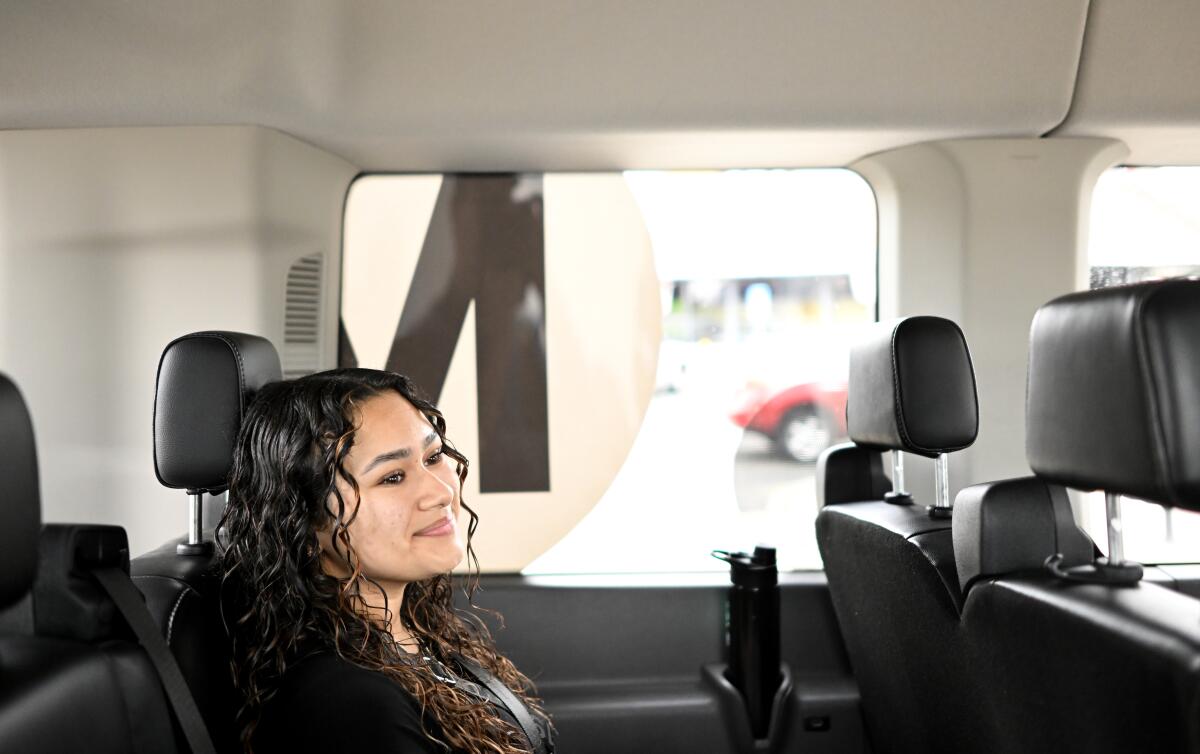
The agency’s own surveys show users feel safer, arrive faster and feel more comfortable in the gray Micro van.
Castro said she doesn’t have to worry about men harassing her on the bus or while waiting at a stop, not far from her home. And she can call it early or late at night. “I feel more comfortable here,” Castro said.
While she talked on a recent ride, driver Alicia Price had the radio turned low playing R&B on KJLH. She lives in Watts and had been driving the vans for two years. During the school year, she said, the vans often filled up with students or people going to work.
There’s sometimes glitches in the software or maintenance is needed, but for the most part things run smooth and she enjoys the work, she said.
Transportation is the largest sector of planet-warming gases, yet Americans won’t let go of their cars. Autos can mean freedom, but so can leaving them behind.
For years she drove buses for schools and the city, but it’s not something she wants to go back to, with recent stories of bus riders being stabbed, customers spitting and other indignities. She’d rather clean buses when nobody is on them.
“I am getting to this point in my life where I don’t got time for that,” she said.
She navigates through narrow streets in Compton, Watts and other parts of South Los Angeles that never see a bus.
By tracking demand patterns over a broad area, officials can identify the neighborhoods that need it the most.
Some complain that when there’s not enough vans, the app will not work. But Castro says she doesn’t encounter problems and rarely waits more than 15 minutes.
Those experiences matter and should be factored in when evaluating transit, said Susan Shaheen, co-director of the Transportation Sustainability Research Center, who has studied the issue.
“The quality of the trip is something that doesn’t get captured in fare-box revenues or in the number of passengers per hour or average cost per ride,” she said.
Only about 2,000 riders board Metro Micro vans on an average weekday compared to 877,000 bus and rail passengers — numbers which are still below pre-pandemic levels.
Critics say funding the vans is siphoning off regular transit users.
“There’s just not good evidence that it encourages folks to get on that micro transit service and connect to a passenger train on the other side,” said Chris Van Eyken, director of research and policy at TransitCenter, an advocacy and research group.
About 19% of riders go on to use Metrolink, a train or other form of public transit, surveys show.
“That money takes away from other things that can be done to improve bus service and increase ridership.”
The growth of these services has also hurt unionized work forces, he said. Some transit agencies use independent contractors to keep their costs lower.
“The opportunity to lower costs on micro transit would require sort of a race to the bottom in terms of labor,” he said.
But Joshua Schank, former chief innovation officer for Metro and a managing principal at the consulting firm InfraStrategies, points out that Metro Micro is unionized and that riders need better options.
“There should be a public alternative to Uber and Lyft that is sustainable and more affordable than Uber and Lyft,” he said. The micro transit program started in his office.
Schank lives in the San Fernando Valley, where a four-mile bus trip can easily turn into an hour-long journey.
“If I want to take transit somewhere, I gotta wait 20 minutes for a bus to show up and then transfer to another post, where I gotta wait another 30 minutes,” he said. “I could have done that in 10 minutes by car and it’s gonna take me an hour. To me, that seems unacceptable.”
Though the program was costly, he thought “it was worth it if it’s going to improve people’s lives dramatically.”
“The concern should be, are we using taxpayer money efficiently to provide necessary service to people who need it, and I would argue micro transit is a great way of doing that,” he said.
More to Read
Sign up for Essential California
The most important California stories and recommendations in your inbox every morning.
You may occasionally receive promotional content from the Los Angeles Times.

